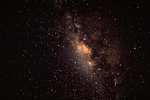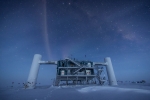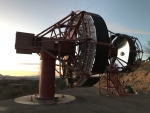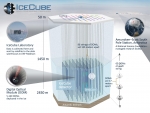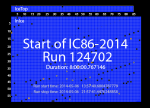IceCube, the Antarctic neutrino detector that in July of 2018 helped unravel one of the oldest riddles in physics and astronomy — the origin of high-energy neutrinos and cosmic rays — is getting an upgrade.
A sensor from the enormous Antarctic observatory IceCube has joined the permanent collection of the Smithsonian Institution.
A new telescope, part of an international effort to develop and build the world’s largest, most sensitive gamma-ray detector, was unveiled to the public Thursday (Jan. 17, 2019) in a ceremony at the Whipple Observatory on Arizona’s Mount Hopkins.
A unique high-speed camera, designed to capture the fleeting effects of gamma rays crashing into the Earth’s atmosphere, will soon be on its way from the University of Wisconsin–Madison to Arizona’s Mount Hopkins.
It’s that time of the year. Down at the South Pole, our team is in the darkness of the austral winter, enjoying beautiful auroras while monitoring IceCube data taking. Up north, the team has completed all updates and checks to the new data systems running live in the IceCube Lab (ICL), sitting on top of the IceCube detector on Antarctica’s surface.
Up until almost the last minute, the summer activities at the Pole kept the IceCube crew busy. This summer, a dozen IceCube researchers and staff, from eight institutions and six countries, spent some time at the Admundsen-Scott South Pole Station to perform maintenance and operations for IceCube and help prepare for a future deployment of the Askaryan Radio Array (ARA) detector. A PolarTREC teacher, Kate Miller, also traveled to the Pole to join the team, contributing to an extensive educational and outreach program that is still in progress.
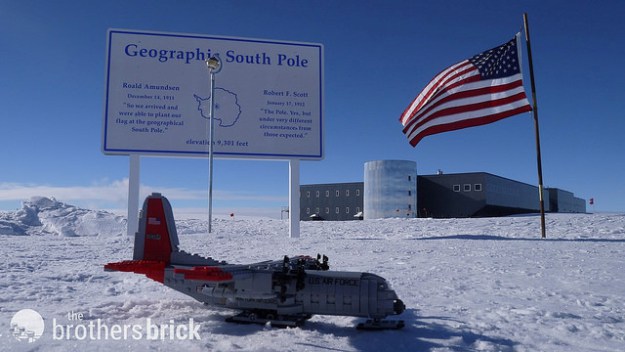
The IceCube detector has been explained widely—in many different languages and in hundreds of locations around the world, and targeting diverse audiences online as well as in auditoriums, museums, and classrooms. But this is the first time that the IceCube Collaboration is making public every detail of the only cubic-kilometer neutrino detector to date, from a flasher board in the digital optical modules—aka DOMs—to the calibration processes that allow researchers to measure the properties of neutrinos, or to the IceCube Live website that IceCubers use to monitor what is going on in the detector. The publication, over 70 pages long, has just been submitted to the Journal of Instrumentation.

